SIMULATION















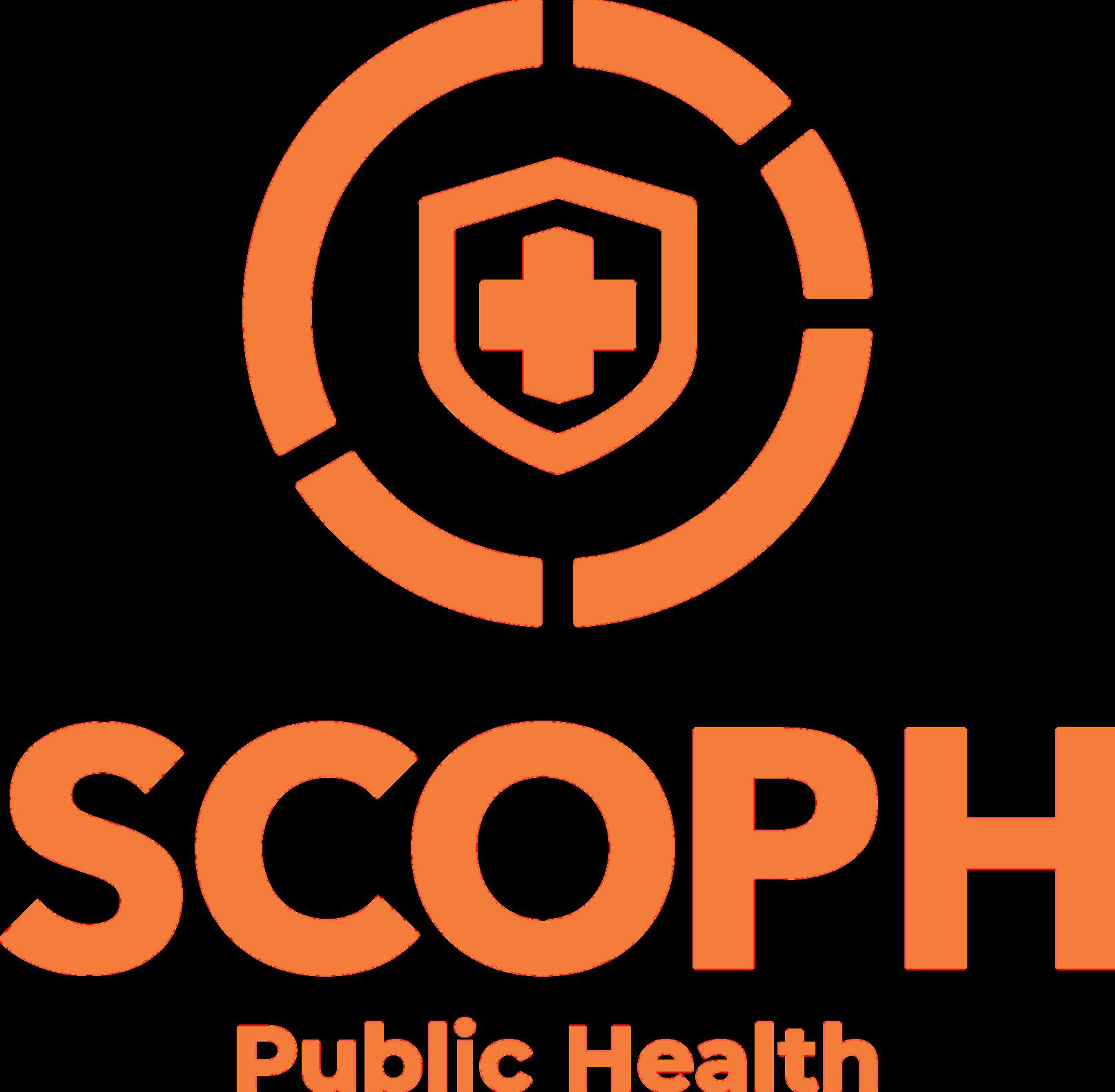
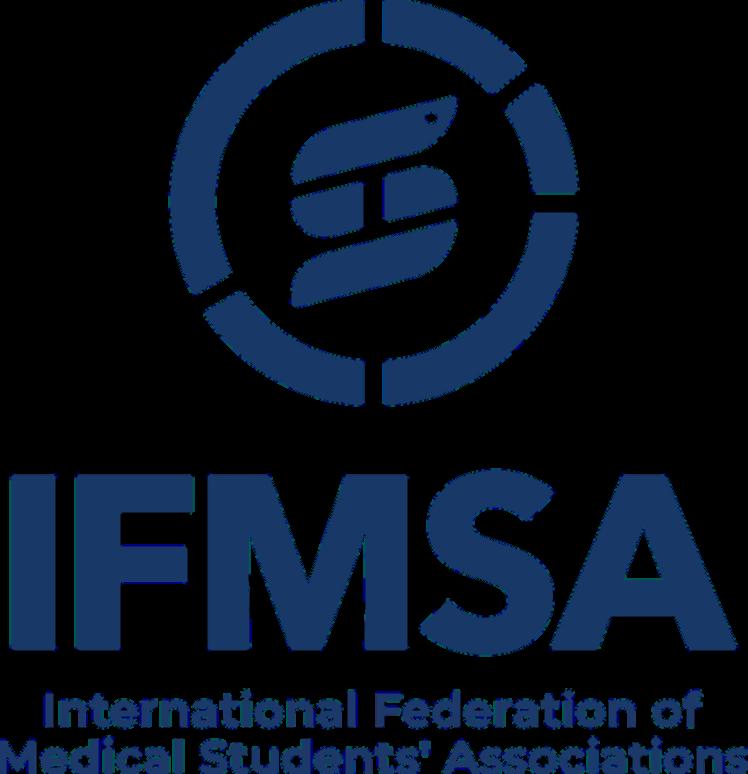


First of all, we would like to thank you for showing interest in this opportunity, applying for it and finally being part of it. This is an amazing opportunity to connect with health enthusiasts from all over the world and broaden your perspectives on global health challenges We hope this will prove to be a fruitful opportunity for all of you, as we have tried our best to provide you with the right circumstances to grow and learn. Just like you, the team behind this simulation comes from different NMOs from various regions around the world, reunited by the motivation to educate and inspire medical students all over the world to be change makers It is an honor for all of us to have you on board, we are looking forward to this activity to provide the desired impact and motivate you further in your journey as healthcare advocates
Furthermore, the choice of water scarcity as the theme for this WHA simulation was driven by the lack of awareness about the topic It is expected that by 2025, two-thirds of the world’s population may be facing water shortages This inspired us to choose this theme, because as future healthcare workers, we will be facing the health adversities caused by this global catastrophe in our career. Due to socio-economic disparities, the crisis will not affect everyone equally hence why we need to unite in the face of health adversities brought upon by these existent inequalities The sooner we are exposed to these obstacles, the sooner we can find solutions It is our role as young healthcare advocates to take on these global challenges and help spread the world about them, in order to find the right strategic approaches to confront them correctly.
Finally, we aspire that your participation in this opportunity will allow you as medical students to gain much needed knowledge about the dynamics of international organizations seeking to implement change on a global level. This will hopefully benefit you in your respective careers to always keep a universal mindset and seek to collaborate with each other to provide innovative solutions If you have any inquiries at any time, please do not hesitate to reach out to any one of us Our team is here to help provide you with a unique experience and maximize the knowledge you will gain And as always, never forget to “Think Global, Act Local”!
Wishing you prosperity and health, Sincerely Yours,
IFMSA-Egypt, AECS-Catalonia, MSAI-India, IFMSA-Morocco, FEVESOCEM Venezuela and EMSA-EthiopiaMADHU SHRUTI

SAMIRA YASSER

OMAR
LYNDA PRATO

FEVESOCEM Venezuela
NMO President & IFMSA SCOPH RA Americas


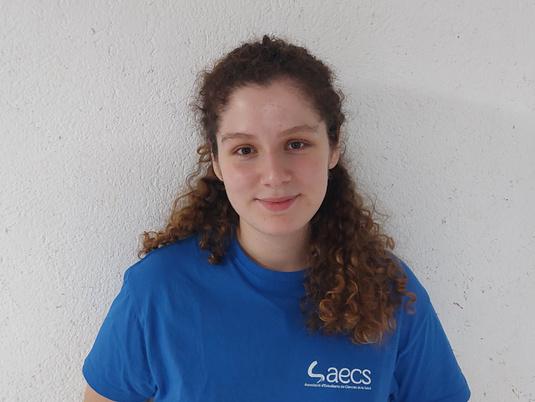

JAINIL DEVANI

NEUS FANALS
MISHEL RINCÓN

YEABSIRA BELETE
EMSA Ethiopia Capacity Building Director

WHA World Health Assembly
WHO World Health Organisation
NGO Non-Governmental Organisation
IGO Inter-Governmental Organisation
EU European Union
SDGs Sustainable Development Goals
Mod
Unmod
Moderated Caucus
Unmoderated Caucus
RoP Rules of Procedure: The rules which dictate how our simulation is run.
Dias
The collective name of the chairs or the group of people leading the committee.
A WHO Simulation is just what it sounds like: a simulation of a meeting of the WHO World Health Assembly. This means that delegates come prepared to take on the role of a representative from a certain country, company, NGO, the press or an important individual, and, while staying true to that role, debate, discuss, and write up motions known as resolutions, that are to be voted on by the committee.
The objective of our committee sessions within the WHO Simulation is to produce a written resolution regarding the topic at hand, which is: 'Environment and Health: Tackling Water Scarcity'.
This section is meant to guide you as you conduct research on the topic that will be debated during committee meetings for the Virtual WHA Simulation. Please note that this guide simply serves as a starting point for your research. It is your responsibility to find as much information on the topic and how it relates to the country or organisation you represent, to be able to effectively participate in the debates. Your ability to affect the Resolution drafting process through discussions (informal and formal caucuses) and the simulation as a whole will increase as you learn more about the topic.
Access to clean water and a healthy environment are critical factors for human health and well-being. Water scarcity, water pollution, and climate change are global problems that affect millions of people worldwide. Lack of access to safe drinking water and basic sanitation services can have serious consequences for public health, food security, and economic and social development. In addition, exposure to environmental contaminants in water can have negative health effects, including respiratory, cardiovascular, and cancer diseases. Therefore, it is important to take measures to protect the environment and ensure universal access to safe drinking water and basic sanitation services for all.
Some of the current solutions to water scarcity, according to the WHO and the UN, include the use of more efficient water consumption technologies, the implementation of public policies that promote water conservation and sustainable use, investment in infrastructure for the supply of drinking water and sanitation, and education and awareness-raising about the importance of water care
In this situation, governments and international organizations have a fundamental role in seeking sustainable solutions that allow access to water for all. Among the possible solutions are the implementation of public policies that promote water conservation and efficient use, investment in infrastructure for the supply of drinking water and sanitation, research and development of more efficient technologies, and education and awareness-raising about the importance of water care. It is necessary to work together to address this problem and ensure a sustainable future for all

Environmental health is a field that focuses on how the environment affects human health The WHO and the UN have recognized the importance of this issue and have established specific goals to promote environmental health. Some of these goals include ensuring universal access to clean water and taking urgent measures to combat climate change and its negative effects.
Environmental health is essential for preventing environmentally related diseases and injuries Environmental factors such as air, water and food quality, as well as exposure to chemicals and other environmental contaminants, can have a significant impact on human health
In addition, environmental health is a key component of sustainable development. Promoting a healthy environment is essential to achieving global health goals, protecting human rights, and ensuring a sustainable future for all.
In summary, environmental health is a critical field for protecting and improving human well-being We can all do our part to promote environmental health through daily practices such as recycling and saving energy, as well as supporting public policies that protect our environment
According to WHO, water safety refers to the ability to ensure that water used for drinking, cooking and other household activities is safe for human consumption. This means that water must be free of chemical, physical and biological contaminants that can cause illness in people.
WHO establishes standards for drinking water quality to ensure that water is safe and healthy for human consumption. The UN has established Sustainable Development Goal 6, which seeks to ensure the availability and sustainable management of water and sanitation for all. In addition, the UN has created the International Decade for Action "Water for Sustainable Development" (2018-2028) in order to promote concrete actions to improve water and sanitation management worldwide Water safety is a fundamental human right

Water, sanitation, and hygiene or just WASH, is a term used to describe the essential services and practices that are crucial for human health and well-being
Safe WASH is not only a prerequisite to health but also contributes to livelihoods, school attendance, dignity, morale, safety, and resilience It involves improving access to safe drinking water, sanitation facilities, and hygiene practices such as handwashing with soap

WASH has a direct impact on human health and well-being, inadequate or unsafe WASH can cause diseases such as diarrhea, malnutrition, malaria, trachoma, and others that can lead to death, especially among children. WASH can help prevent and control the spread of infectious diseases by enabling proper hygiene practices.
WASH interventions are actions or activities that aim to improve access to safe water, sanitation and hygiene for people and communities, encompassing technologies, behavior change and systems strengthening to ensure sustainable monitoring, regulation, and financing of WASH services. Some examples of WASH interventions are:
promotes nutrition, hydration, and health literacy among school children. It involves providing safe drinking water, adequate sanitation facilities, hygiene education, deworming treatment, and micronutrient supplementation. It also supports menstrual health and hygiene in schools by constructing private, secure sanitation and washing facilities as well as menstrual pad disposal facilities.
works to improve access to basic water, sanitation, and handwashing facilities, and to establish protocols for preventing and controlling infections, promoting hygiene practices among staff and patients, such as washing hands before and after contact with patients, using personal protective equipment and disinfecting surfaces and equipment.
this includes transporting water, ensuring it is purified or providing water treatment and storage; also constructing toilets in refugee camps and transit centers. Promoting hygiene practices and distributing hygiene kits.
There are several examples of countries finding solutions for national problems on water scarcity:
Chile: is projected to be one of the most vulnerable countries in the face of worsening global warming. The country has invested in desalination plants, water reuse projects, and water efficiency measures to cope with water scarcity
Kenya: has supported community-based solutions such as sand dams, rainwater tanks, and boreholes to increase access to safe and reliable water sources.
Malta: relies heavily on desailination but this is expensive, so the work on upgrading its desalination plants to improve energy efficiency and reduce operational costs, Implementing a water reuse programme, promoting rainwater harvesting and groundwater recharge through incentives and developing a national water policy.
Niger: has implemented solutions such as rainwater harvesting, drip irrigation, and sand dams to improve water availability and agricultural productivity, they seek the expansion of water supply services and public sanitation facilities, to promoting good hygiene for better health outcomes and institutional reforms
Singapore: has taken various actions to achieve water self-sufficiency and security, such as: developing the Four National Taps: imported water from Malaysia, local catchment water, reclaimed water (NEWater), and desalinated water.
South Africa: has adopted solutions such as water restrictions, leak detection, groundwater development, and water conservation campaigns to reduce water demand and increase supply

Collective global action is increasingly recognized as central to achieving the highest attainable standard of health and well-being for the world’s people. Governance constitutes the constellation of mechanisms society uses to effect collective action toward common goals. Although individuals bear the major responsibility for maintaining healthy lifestyles and for seeking appropriate preventive and therapeutic care, many factors necessary for health can only be established through collective action on a larger scale.
Governments and international organizations can contribute to global health challenges on many levels The 21st-century global health landscape requires effective global action in the face of globalization of trade, travel, information, human rights, ideas, and disease The new global health era is more plural, comprising a number of key actors, and requiring more coordination of effort, priorities and investments
Organizations with a global outreach play an essential role in the global governance of health and disease; due to their core global functions of establishing, monitoring and enforcing international norms and standards, and coordinating multiple actors toward common goals. Global health governance requires leadership and effective implementation of core global functions to ensure better effectiveness of all health actors, but achieving this global mission could be hampered by narrowing activities and budget reallocations from core global functions
Public health is one of the greatest things in which a government can invest Early prevention, which is relatively inexpensive, can prevent dire and expensive healthcare problems later in life
Governmental responsibilities for public health extend beyond voluntary activities and services to include additional authorities such as quarantine, mandatory immunization laws, and regulatory authorities. The state's partnership functions by encouraging residents to do things that benefit their health (e.g., physical activity) or create conditions to promote good health, and requiring certain actions (e.g., food safety).
The areas of public health responsibility include:
1
Assuring an adequate local public health infrastructure
2
Promoting healthy communities and healthy behaviors
4
Protecting against environmental health hazards
3
Preventing the spread of communicable disease
Preparing for and responding to emergencies
5 Assuring health services
6
Effective collective action requires coordinated policy and a collaborative approach to implementation
Historically, the purview of sovereign states and intergovernmental organizations like the WHO, global health policy is now being influenced by an ever-increasing number of nonstate and non-intergovernmental actors with a range of mandates, interests, resources, means, and degrees of accountability.
Illustrative community needs amenable to organized, collective public-health solutions include the need to provide individuals with access to safe, potable water, hygienic housing and worksites, nutritious and uncontaminated food and drugs, and protection from infectious diseases. In recent decades, the challenges for global health governance have grown to encompass the prevention of interpersonal violence, unintentional injuries, threats to mental and reproductive health, and the prevention of global epidemics of chronic diseases In health systems, current challenges include addressing the consequences of healthworkforce migrations from communities in dire need to meet the growing demand for health workers in wealthier countries. Threats to health, actual and perceived, can also constitute challenges to peace, economic prosperity, family and military stability, and human rights.
You can check this edX course on "Water: Addressing the Global Crisis":
You can check our Theme Guide Drive folder with relevant resources for your research :

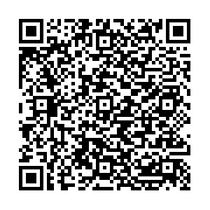
Environmental health:
Environment and Health – WHO Europe
The role of governments and international organizations
Report on Global conference on Strengthening Synergies
WASH
WASH WHO
Water scarcity solutions
UNWater – Coping with Water Scarcity
Water, Growth and Finance-Policy Perspectives
Water security
Global Water Security 2023 Assessment
Water Security Framework Research
WWC Water Security Strategy
Water scarcity secret files
1. 2 3.Preparatory capacity building sessions will be provided to delegates to provide them with necessary knowledge and skills in preparation for the simulation
Countries that are Member States of the United Nations are Member States of the World Health Organisation They each have one vote in the Assembly, and essentially constitute the Assembly








Observers are invited non-Member States, who can include an international organization, Non-Governmental Organization (NGO), national organization or even an individual Observers can only vote on procedural matters They can make a statement on the subject under discussion.
EU - European Union
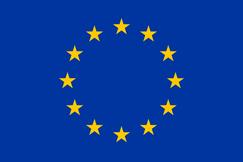
UNEP - United Nations Environment Programme

OECD - Organisation for Economic Co-operation and Development

World Water Council

IFMSA - International Federation of Medical Students’ Association
Please refer to this sheet for your allocated role.

Day 1: 23rd of June 2023
14:00 GMT: Opening Ceremony (20 min)
Opening remarks from Coordinators
Opening remarks from Salman Khan, IFMSA Director of the Standing Committee on Public Health
Opening remarks from José Diogo Soares, IFMSA
Program Coordinator for Environment and Health
14:20 GMT: Plenary 1: Opening Statements of Member States and Non-State Actors (60 min)

15:20 GMT: Break (20 min)
15:40 GMT: Committee Session 1 (60 min)
16:40 GMT: Break (20 min)
17:00 GMT: Committee Session 2 (60 min)
Day 2: 24th of June 2023
14:00 GMT: Committee Session 3 (60 min)
15:00 GMT: Break (20 min)
15:20 GMT: Committee Session 4 (60 min)
16:20 GMT: Break (20 min)
16:40 GMT: Plenary 2: Closing Plenary (45 min)
17:25 GMT: Closing Ceremony (30 min)
English shall be the official working language of the simulation. No representative may address the forum or submit a document in a language other than English
Chair/ President: Every year a President is elected from among the Member States to serve for the rest of the term The President shall declare the opening and closing of each plenary meeting of the session, shall direct the discussions in plenary meetings, ensure observance of these Rules, accord the right to speak, put questions and announce decisions They shall rule on points of order, and, subject to these Rules, shall control the proceedings at any meeting and shall maintain order thereat The President may, in the course of the discussion of any item, propose to the Health Assembly the limitation of the time to be allowed to each speaker or the closure of the list of speakers
Vice-Chair/ Vice-President: There are 5 Vice Presidents elected from amongst the Member States to assist the President in their respective roles
“DIAS committee” refers to the committee in charge of chairing the simulation. The Virtual WHA Simulation shall be chaired by a DIAS committee composed of a Chair and a 2 Vice-Chairpersons It shall be responsible for all issues to the conduct of the debate, open, suspend, close committee sessions, moderate all debates, ensure observance of rules of procedures, maintain order, and conduct voting procedures. The DIAS committee decides who has the right to speak at any point during the committee session.
Inappropriate words, expressions, and acts which offend human dignity or constitute malicious attacks or discrimination against any other individual are prohibited. In case of the violation of this rule, the DIAS committee may take any appropriate disciplinary action in order to sustain appropriate standards of decorum at all points during the proceedings of committee sessions.
The start of the first session shall mandatorily get all member and non-member state actors vote in favor to set the agenda which represents the main theme that will be discussed in the WHO council all over the course of the simulation.
The DIAS Committee shall proceed to a Roll Call in the beginning of each session and after each break, to recognize which member and non-member states are being represented in the room
Every delegate not being punctual at the given schedule shall be required to write an apology letter directed to the DIAS, that may or may not accept it. If accepted, the delegate shall report to the DIAS if they are “present”, or “present & voting” before joining the committee session.
During each roll call, each delegate shall specify if they are “Present” or “Present & Voting”. Present is a state that’s given the chairs indication of its presence, and may take part in formal debates and has the choice whether to vote or not on the topic at hand. However, a state that’s Presenting & Voting cannot abstain on voting on all substantial matters until the next roll call
Each delegate shall be recognized by the DIAS before taking the floor to speak.
At the beginning of the first plenary session, each Member State representative shall deliver a pre-made statement of 15 minutes duration on their priorities and expectations from the meeting. Representatives of NSAs are also expected to deliver a pre-made statement of 1 minute duration. Opening speeches should provide for positioning within the committee and should briefly outline a country’s or organization’s stance and objectives in relation to the topic
At the final plenary session, representatives of the Sponsors of the draft resolution present the document to the plenary within 2 minutes The Chair can then open a speaker's list to receive questions or amendments on the draft resolutions, before proceeding to the voting
After the delegates have presented their opening speeches in the first plenary, a continuously open speaker’s list is to be established for the purpose of formal debate
A speaker’s list will be opened at the beginning of each committee session. Those delegates who wish to speak will be recognized and added to the list
During formal debate, delegates may speak generally on the topic area being considered, may address any draft resolution currently on the floor or may raise procedural or substantive motions and points
During the Session, delegates may motion to enter a moderated or unmoderated caucus, as described below The Chair may specify the allotted speaking time to each speaker, alternatively, delegates may motion to set the speaking time or to increase/decrease the existing time. If the time allotted is exceeded the Chair will call the delegate to order
A MOTION is a proposal to change the flow of debate by changing the format of the debate, moving onto voting, or closing the debate
During the course of committee sessions, delegates can raise motions to enter Moderated or Unmoderated Caucuses to proceed with discussing specific matters related to the given topic.
A Moderated Caucus, also called formal discussion, is a format that allows delegates to give speeches around specific sub issues in a determined general and individual speaking time The moderated caucus allows more delegates to speak within a shorter time frame than the speaker’s list, thus stimulating discussion and clarifying the positions of delegates involved. The debate shall be chaired by the DIAS
Each delegate willing to take part of the debate shall be recognised to be added to the general speakers list
The motion for a moderated caucus must include a time limit for delegate remarks and a time limit for the entire caucus (e.g. The Country of France moves for a five minute moderated caucus with a 30-second speaking time, for the purpose of a specific topic). Such a moderated caucus would have enough time for ten speakers
If the general speaking time is exhausted but a delegate is still interested in keeping the discussion going, they shall raise a motion to extend the general speaking only by half of the time firstly dedicated to that specific motion.
An Unmoderated Caucus, also called informal discussion, allows delegates to leave their seats and form groups of discussions with their allies in an unstructured format, and freely exchange ideas without the control of the DIAS
The recommendation for an unmoderated caucus requires a time limit to be made (eg The country of France moves for a 10-minute unmoderated caucus, for the purpose of specific topic).
If the general time allocated for the unmoderated caucus wasn’t enough for delegates, they shall raise a motion to extend the time of the unmoderated caucus only by half of the time firstly dedicated to that informal discussion. Delegates are required to raise two motions to proceed with moderated caucuses before being able to have an unmoderated caucus in committee sessions
A motion to suspend the meeting shall be raised to proceed to a break, and guarantees returning to committee sessions shortly after
A motion to adjourn the meeting shall be raised to postpone debates and proceedings until a later stated time and place.
A delegate may, at any time during the final committee session, move for the Closure of Debate on the item under discussion, after which the debate will end and all draft resolutions and amendments will be put to an immediate vote
Permission to speak on the closure of debate shall be accorded only to two speakers opposing the closure, after which the motion shall be immediately put to a vote.
This motion requires a two-thirds majority decision.
Upon passage of this motion, the Chair shall declare the closure of the debate and immediately move into voting procedure on the substantive proposals introduced and pending before the committee
The Committee shall also close debate and move into voting procedure when the speaker’s list has been exhausted
Point of Order: During the discussion of any matter, a delegate may raise a Point of Order and the Chair shall immediately consider the request. A Point of Order must relate to the rules of the committee or to the way the Chair is exercising his or her power, i.e. a rule of procedure has not been respected by the DIAS. The latter would assess the validity of the point raised immediately. A delegate raising a Point of Order may not speak on the substance of the matter under discussion. A Point of Order may interrupt a speaker. Point of Information: A delegate may raise this point if they have any inquiry to be directed to the actual delegate having the floor. This point may not interrupt a speaker
Right of Reply: A delegate may ask for a right of reply if that delegate feels that the delegate whose speech immediately preceded their demand of a right of reply directly attacked them or the dignity of their nation. If the chair grants the right of reply, the delegate who feels that they or their nation have been attacked may speak for 30 seconds in response to the perceived attack.
Point of Personal Privilege: During the discussion of any matter, a delegate may raise a Point of Personal Privilege and the Chair shall immediately address the point. A Point of Personal Privilege must refer to a matter of personal comfort or safety and/or the well-being of the members of the committee For example, if a delegate is unable to hear the speaker. A point of personal privilege shall interrupt a speaker in any case, but preferably is to be used in utmost discretion Point of Parliamentary Inquiry: If there is no discussion on the floor, a delegate may raise a Point of Inquiry to request clarification on the Rules of Procedure A Point of Inquiry may never interrupt a speaker
Council activities and debate shall start when at least one third (1/3) of the delegates are present, which is called the Quorum. This will be verified through the roll call that will be carried out by the DIAS Voting on substantive matters required two third (2/3) majority.
During a roll call vote delegates are called upon in alphabetical order Each delegate then shall answer with either “Present” or “Present & Voting”.
Apart from the final voting on a draft resolution and amendments, all voting done at the simulation will be considered procedural voting Procedural votes require a simple majority to pass implying that 50% plus one vote (+1) of the council should vote in favor for the matter to pass. If the vote is a tie, the matter on which the delegates are voting on won’t pass No abstentions are permitted.
The only substantive voting at the simulation will be the final voting on draft resolutions, amendments and division of the questions Passage requires affirmative votes from two-thirds of the total number of voting delegates Abstentions do not affect the consensus quorum required for passage. Abstentions are only allowed in the case of substantive matters
Each session starts with a roll call in alphabetical order. When called upon, each delegate shall specify if they are “Present” or “Present & Voting”.
At the beginning, each delegate is expected to give a short opening speech outlining his/her country’s or organization’s position and objectives on the topic. Afterwards, a continuously open speaker’s list is to be established. After the adoption of the speaker’s list, the formal debate starts, and delegates can raise a motion and change the style of debate to a moderated caucus or suspend the meeting for informal consultations.
Delegates will be asked by the Chair whether they wish to be placed on the speaker’s list. Those recognised will be put on the speaker’s list. After the delegate finished his/her speech, the delegate may be added to the speaker’s list again by passing a written request to the Chair. The speaker’s list is continuously open. Debate will not be over once the speaker’s list has been exhausted. In order to close the debate and move to voting procedure, a motion to close the debate is necessary, which requires a simple majority vote for passage.
A motion for a moderated caucus is in order at any time during formal debate when the floor is open and prior to closure of debate. A simple majority vote is required for passage. The delegate raising the motion must explain its purpose and propose the individual speaking time. If nobody wants to take the floor, the style of debate will continue in the form of the speaker’s list. Alternatively, formal debate can also be resumed by a motion to move back to formal debate which requires a simple majority vote for passage.
Once a delegate believes that the debate has been exhausted and/ or a draft resolution has been prepared, he/she may raise a motion to proceed into voting procedure. If the motion passes, the Chair shall declare the closure of debate and move to voting procedure.
A motion to adjourn the meeting shall be raised to postpone debates and proceedings until a later stated time and place.
A motion for a suspension of the meeting is in order at any time during formal debate or during a moderated caucus. A simple majority vote is required for passage. The delegate raising the motion must explain its purpose and specify a time limit. During a suspension of the meeting, delegates can meet informally with each other to discuss relevant issues. Once the suspension of the meeting is over, the formal debate or moderated caucus continues as before.
Once the committee moves into voting procedure, amendments are voted upon first, then resolutions. Passage requires affirmative votes from two-thirds of the total number of voting delegates. Observers have the same rights as members of the committee, but cannot vote on resolutions and amendments and may not introduce amendments, but can introduce draft resolutions.
Motion to move to a moderated caucus
Honorable Chairperson, we would like (or: the Republic/ Kingdom/ etc of XXX would like) to raise a motion to move to a moderated caucus with the time limit of X minutes for individual speeches to discuss the topic XX
Motion to suspend the meeting
Honorable Chairperson, we would like to raise a motion to suspend the meeting for a period of X minutes for the purpose of XX.
Motion to move back to formal debate
Honorable Chairperson, we would like to raise a motion to move back to formal debate.
Motion to close the debate
Honorable Chairperson, we would like to raise a motion to close the debate
Honorable Chairperson, as the integrity of our nation has been insulted by the delegate of XXX, we kindly ask for the right of reply.
Point of Order/ Point of Information
Point of Order, honorable Chairperson!
Point of Information, honorable Chairperson!
Check out this video!
Read through the delegate handbook
Attend all preparatory sessions and actively participate
Fill out the Pre-Evaluation Form. Contact the members of your simulation delegation.
Do background research on the position of your Member State or NSA
Draft a statement on behalf of your Member State or NSA with your teammates
Submit your position paper to the DIAS before the event.
Change your Zoom name to your Member State or NSA Delegates will not be admitted into the simulation if they are named incorrectly.
Deliver your prepared statement (please agree on which member will deliver it before the session for it to run smoothly)
Speak only on behalf of your country You are responsible for representing their stance, even if it goes against your personal views.
Delegates are expected to refer to themselves as a third person, ie: delegate of X country
Be proactive during the unmoderated caucuses
Fill out the Post-Evaluation form
Before the simulation, there are 4 things that you need to do with your teammate: 1 2
3. 4
Read the delegate handbook and theme guide
Research your country/ organization
Write a position paper
Prepare your opening statement
Delegates must do their own research about the topic and their country’s position on it to be ready. This could include the country's economics and demographics, relationship with other countries, strengths and weaknesses, stance on the topic, etc. The more time spent on research, the more likely delegates will be able to deal with anything unexpected that happens in the committee. They'll also be able to know if solutions from other delegates will be suitable for their resolution and have more key pieces of information and statistics to back up their speeches during the debates.
Position papers are a physical product of delegates’ independent research. This is a short essay that should introduce a delegate’s country/ organisation which states their position on the issues and the reasons for that position, and can detail a general plan of action at the simulation. Position papers should be wellresearched, but they are not a research paper; generally they are 1-2 pages long. A biography or citations are not mandatory.
Opening Statements are short speeches (1-15 minutes long) that are delivered in the Opening Plenary and provide an overview of your position.
See Annex 1
Position papers should adhere to the following:
Length must not exceed two pages; any position papers over two pages will have only the first two pages considered.
Margins: 1 inch or 254 cm for the whole paper
Font: Arial, 10 pt.
Justify the text of your paragraphs so both the right and left sides have straight edges
Centered on the first line of the first page, type Delegation from Member State/Non-State Actor
Centered on the second line of the first page, type Position Paper for the WHA Simulation.
Do not include the name of your university or NMO/ LC anywhere in the position paper.
Address the global/regional context of the topic (including relevant statistics and information); what the international/regional community and your Member State or NSA have previously done to address the topic; and provide both broad and specific actions that your committee and the international community can take to address the topic going forward (while also acting in line with your Member State's or NSA’s positions and policies).
Do not plagiarize content Plagiarized position papers will be discarded, and the delegates will be penalized.
Submit your position paper in PDF format. The filename should be
[Position Paper Member State/ NSA]
All Position Papers should be uploaded to this folder before the 22nd of June 23:59 GMT.
Tips on writing your position paper: Link
Position Paper Example: Link
Statement Example: Link
Working Paper: Working Paper is an informal draft resolution proposed by a single Member State or by a group/bloc of nations without formatting which forms as the basis for creating a Draft Resolution, and after adoption, Resolution
Draft Resolutions (hence referred to as DR) are decisions, declarations, conventions, agreements or general decisions that are formally presented to the committee/assembly proposed by certain nations generally via consensus and with prior permission from the Vice President. It is a summary of decisions agreed upon by most/all nations throughout the course of the conference on a given agenda.
Resolution: A DR which has been adopted by the committee is called a resolution.

Sponsors: These are the member states who come up with the content of the resolution and directly endorse it.
Parts of a Resolution: A resolution consists of two parts: Preambulatory Clauses: These introduce the agenda and provide context for the rest of the resolution These are generally references to the UN Charter, relevant resolutions and previously agreed upon international instruments. They start with any of the following phrases:

2. Operative Clauses: These are the main policies that the resolution seeks to enact They contain policy prescriptive action which is internationally agreed upon. They start with any of the following phrases:
Format:
Heading: On the left side in capital, bold letters in Times New Roman font, size 14 in the uppermost part of the page.
Topic and Resolution Number: Right below the heading Resolution Number- 1.1,1.2 depending on the agenda point and the order of submission
Committee Name: Right below the topic and Resolution Number.
Content: 2 lines below the committee name in: Times New Roman Size 12
Preambulatory and Operative clauses- starting phrase will be underlined

A line between different paragraphs is required
To introduce a DR, after permission from the Vice President, a “Motion to Introduce DR (#)” is raised
Following the motion, the DR can be discussed in the following ways: Question and Answer Session: Most common, the Chairs allow for questions to be asked to the sponsors of the resolution.
Speaker’s List: Opening a speaker’s list or a moderated caucus to discuss the resolution at large
Amendments: These are changes proposed to the draft resolution after it is introduced in committee and need prior permission from the Chairs They can be of two types:
Friendly Amendments: All the sponsors of the DR agree with friendly amendments, and they are adopted automatically by the committee
Unfriendly Amendments: They are voted upon by the committee, and to propose an amendment, the Member State needs the approval of the Chair and 20 percent of the attending quorum.
Voting: Each Member State gets one vote, but Non-State Actors (NGOs and IGOs) do not have the right to vote. They, however, can provide their seal of approval for a DR, and may remove it if the resolution is amended against their policies. For member states, there are three ways in which they can vote:
Yes: In favor of the DR
No: Against the DR.
Abstain: Member States may abstain from voting on substantive issues like resolutions, but not on procedural matters. They are adopted by a simple majority.
Link to sample Draft Resolution: Here
Link to actual World Health Assembly resolution: Here







